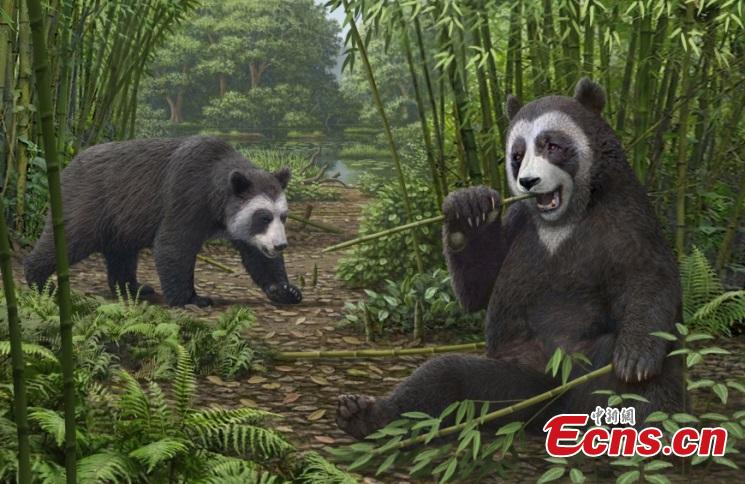
Restoration photo of earliest giant pandas. (Photo provided to China News Service)
Fossil of the false thumb dating back to 6-million-year from the late Miocene site of Shuitangba in Yunnan Province reveals the earliest giant panda can manipulate bamboo.
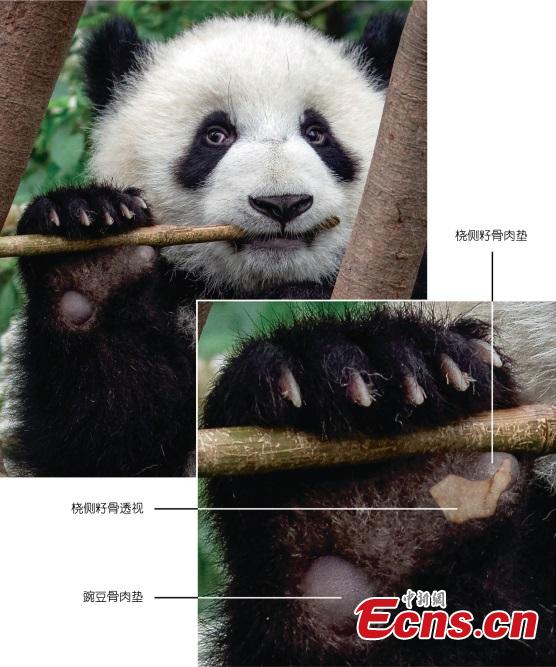
Giant panda gripping and chewing a thick, dried bamboo stem at Chengdu Research Base of Giant Panda Breeding ,Sichuan Province, April 21, 2016. (Photo provided to China News Service)
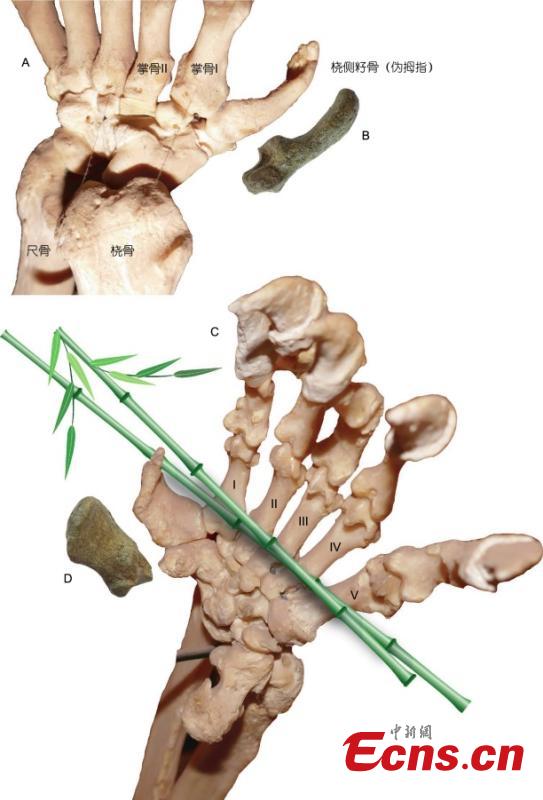
Giant panda’s false thumb. Dorsal (A) and ventral (C) views of the modern giant panda left hand, as compared with an isolated left radial sesamoid of Ailurarctos cf. A. lufengensis (B and D, ZT-2015?0056) at a similar angle and relative size. Mounted skeleton of the giant panda on display at KIZ exhibition hall, probably a zoo specimen. (Photo provided to China News Service)
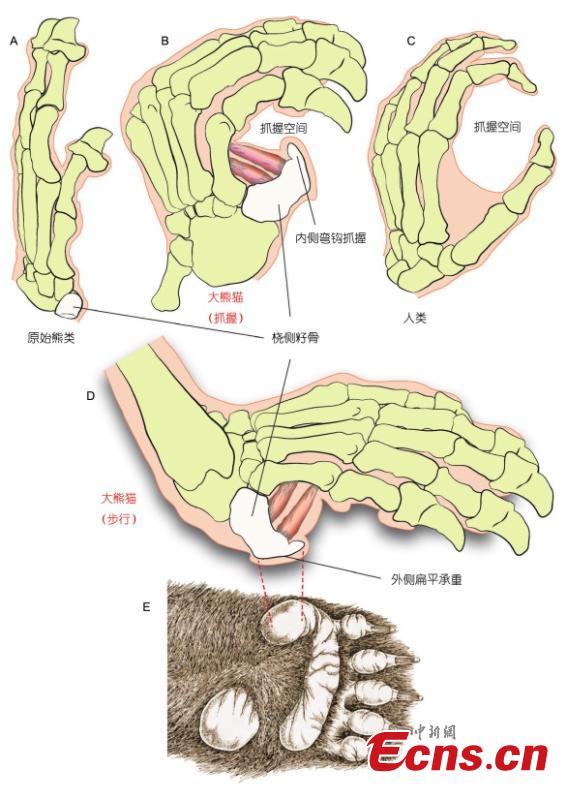
the positioning of the radial sesamoid. Illustrations are of left hands. (A) A basal ursoid from the early Oligocene of North Dakota (USNM 637,259) showing the primitive condition of an unenlarged radial sesamoid; (B) grasping hand in extant Ailuropoda; (C) grasping hand of modern human; (D) walking hand of extant Ailuropoda in a plantigrade posture; (E) external ventral surface of the hand of Ailuropoda showing a fleshy, plantar pad that corresponds to the radial sesamoid (red dash lines). (Photo provided to China News Service)
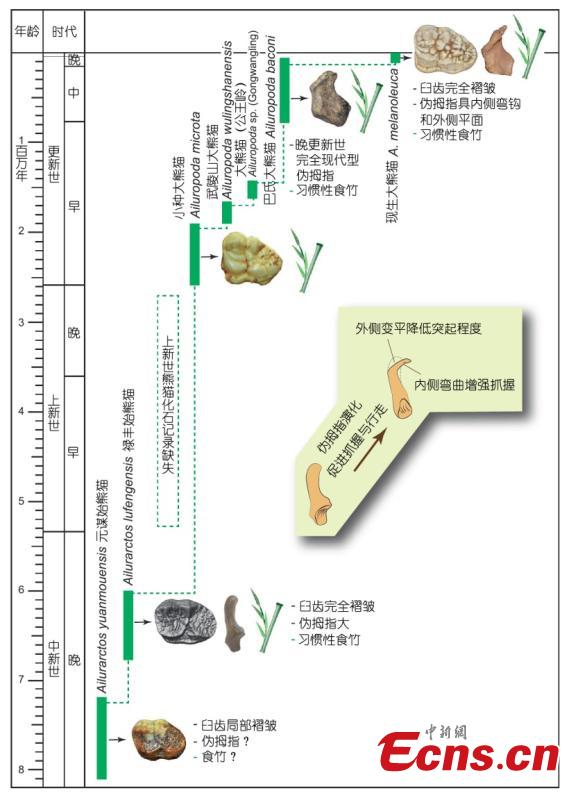
Phylogram of the giant panda showing the relevant steps discussed in the text and evolution of the false thumb. Pleistocene panda species ranges and chronospecies scheme follow Jin et al.20. The largest species, Ailuropoda baconi, was thought to be restricted to middle and late Pleistocene, with the modern species, A. melanoleuca, as Holocene20, although Sheng et al.34 recognized the initial divergence of the living lineage in the late Pleistocene. (Photo provided to China News Service)










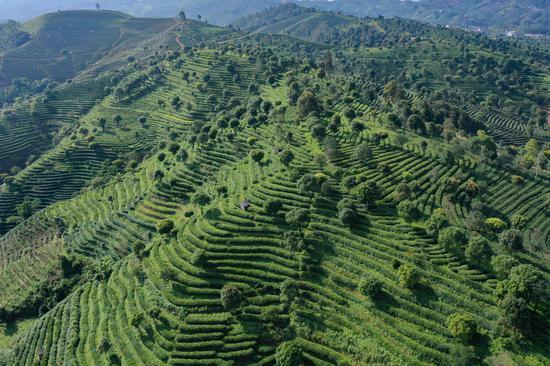








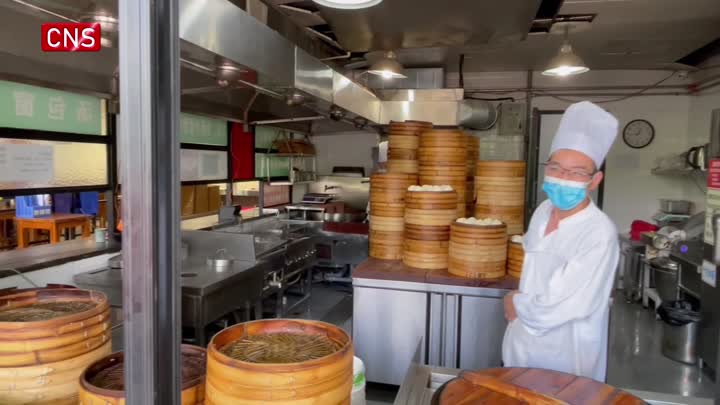


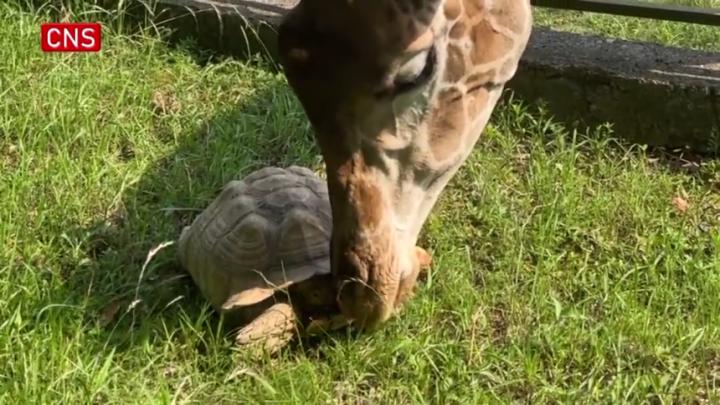
 京公网安备 11010202009201号
京公网安备 11010202009201号